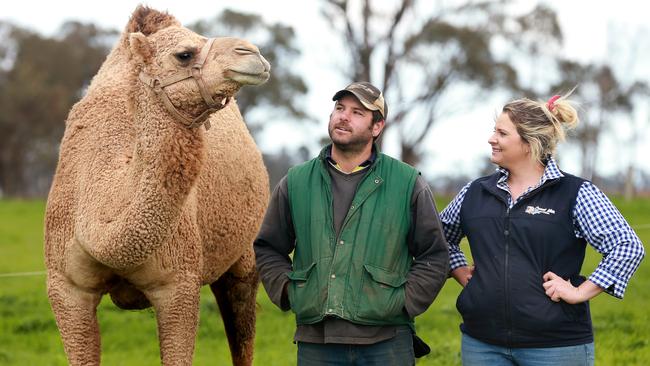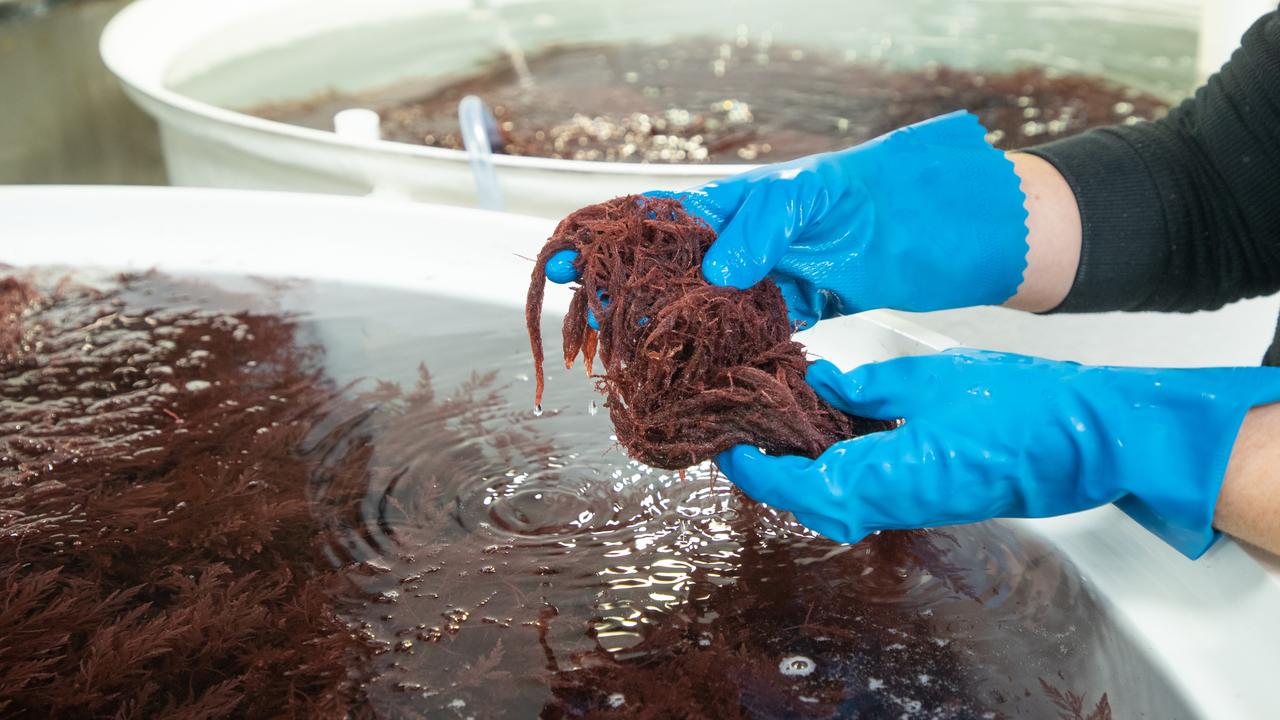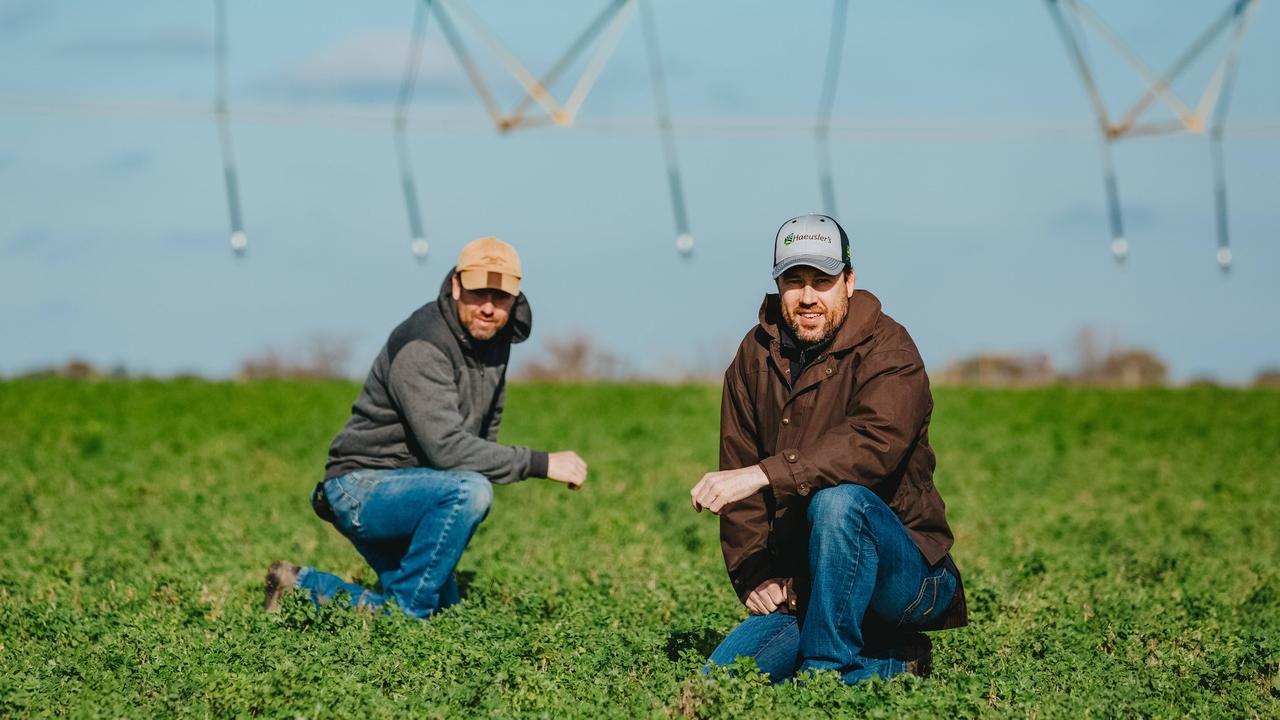Camel Milk Victoria the only licensed camel milk dairy in Victoria
CAMEL Milk Victoria received a mountain of mixed publicity last week, but FARM has the full story of the young couple behind the brand and their unique dairy farm in Kyabram.
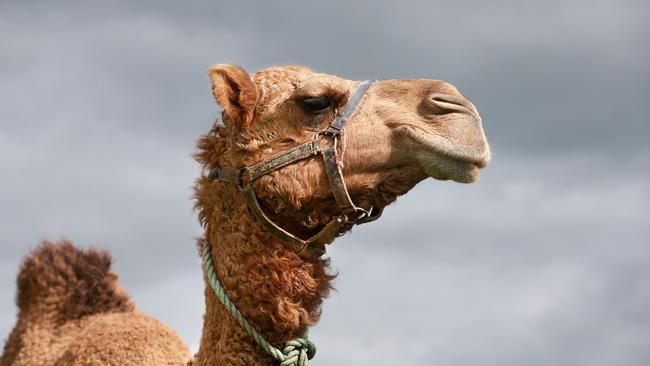
BEING Victoria’s first and only licensed camel milk dairy farm carries with it a certain cachet, admits Megan Williams and her husband Chris.
“We get called pioneering, entrepreneurial, enterprising, new and niche and that all sounds exciting,” Megan says.
“Being the first, though, means we’ve taken a gamble, we’ve done the hard road, working from A to Z to get things up and going and gone through an enormous amount of red tape. The pioneer tag has a nice ring to it but sometimes it would have been easier not to be the first.”
Yet, despite this sentiment, the firsts keep rolling on for the Williams family.
In 2014, they were the first camel milk dairy farm to become licensed to process and sell camel milk for human consumption. The couple currently milk 20 of the idiosyncratic humped creatures on 43 hectares at Kyabram, in northern Victoria, with plans to increase to 50 milkers by the end of this year.
They are also planning to be the first to produce camel milk powder and camel milk chocolate, as well as cheese and yoghurt – in addition to their current production of fresh milk and body products including soap, lip balm and laundry powder.
And they are planning their biggest move yet for late next year: a camel-inspired tourist farm on 200 hectares near Kyabram, complete with rides, café and milking showroom.
“We already have a lot of interest that we’re turning away,” the 28-year-old says.
The future is hard to predict, especially because it’s a new industry, but so far we’re growing in leaps and bounds. We’re getting asked for new products and sometimes we have to ration out supplies to customers.
“Every time there’s a step-up in production, it goes out the door as fast as it’s bottled.”
Not surprisingly, therefore, camel milk is often referred to as white gold, retailing at about $21 a litre, compared to cow’s milk at about $2 a litre.
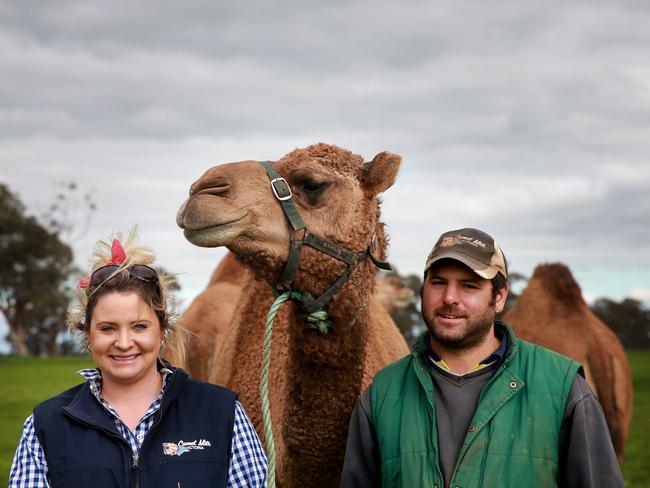
Compared to conventional milk, it is also considerably lower in fat – with about 30 per cent less. Camel milk also has 40 per cent less lactose than bovine milk, with higher protein and is believed to help conditions from skin complaints to food allergies.
But – and this can be a big but – camels are the darnedest animals to milk.
The fact Megan and Chris source their camels from wild herds in northern central Australia doesn’t help the situation.
Before they can be cupped up by machine in the dairy, the creatures need to be broken in, and it’s nothing like breaking in horses.
“It requires time and patience to settle them into a milking routine,” Megan says, adding the process can take six weeks to four months.
During the first days following a camel’s arrival they aren’t touched, but simply fed.
“By the third day the wild camels are eating out of our hands and they get food as reward,” Megan says.
The next stage is applying a halter and rope and teaching them to be tied and walked through the dairy race, until they feel safe enough to stop and eat in the dairy.
“Often you can tell by their poo,” Megan says. “If it’s runny, they’re frightened, if it’s firm, they’re confident in the situation.”
Even then, some can never be trained – these females, along with any male calves, are sold as pets or lawn mowers to farms.
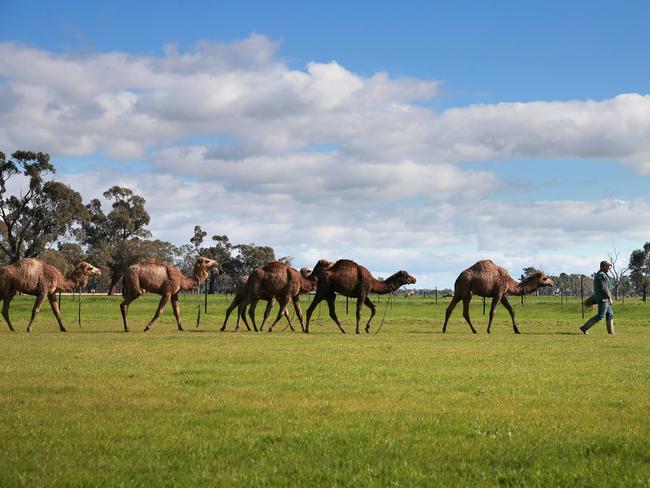
Then comes the tricky part: milking.
The Williams have 20 milkers, but a herd of 70, with males strictly confined at times because when they are in season, “they become dangerous, even deadly,” Megan says.
Females have a gestation of 12 months, are milked for 18 months and then rested for 18 months, making for a complex formula, with the aim of year-round supply.
Furthermore, milkers dry up unless they have their calf suckling with them at all times.
“Goats, buffalo and cows will continue to produce milk from the stimulation of the milking cups alone – they don’t need their calves. But the stimulation of camels is more complex,” she says, adding this is the accepted method around the world.
Megan estimates a camel’s milk is shared equally between the dairy and the calf, with twice daily milkings yielding about six litres a day from each camel, considerably less than a bovine cow’s production of 20-50 litres a day, depending on the time of year.
The pay-off is the life expectancy of camels is up to 50 years, with females able to be milked up to 25 years of age, and “there is no such thing as a barren camel,” Megan says.
The animals are hardy and healthy with the somatic cell count (an indicator of the number of pathogens in milk) lower than cows.
“Because the calf is constantly with them and drinking, mothers have a low risk of mastitis,” she says.
Megan says there are no licensed drugs for camels in Australia and as such they rely on homeopathic treatments of apple cider vinegar and garlic in their feed, with sulphur powder and iodine used to treat mange. Unlike cows, she says, camels are not prone to foot rot.
Even though Megan grew up on a conventional dairy farm, she says she has embraced alternative treatments.
“As easy as it is to give them one jab and it’s gone and organic can be time-consuming, it’s nice to know we can do it this way,” she says.
“It’s a lot less intense.”
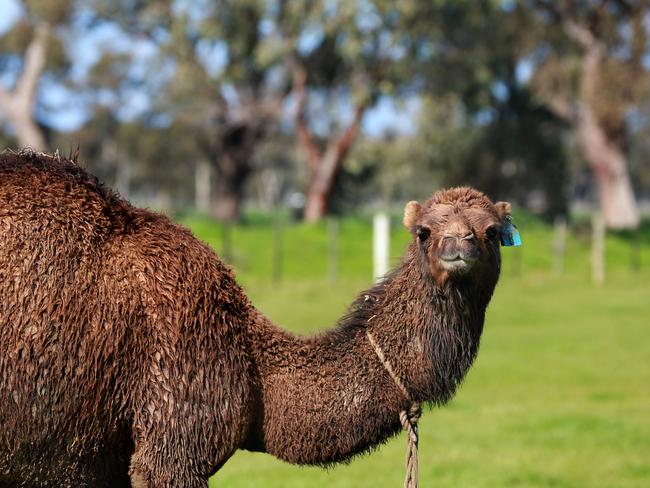
The milking herd has a mixed diet including pastures of lucerne, rye grass and oats, as well as bales of hay for roughage. They are also given a grain mix, so all up each camel receives 12kg of dry matter a day.
Camels are milked in a modified conventional dairy, with the roof and railings higher (because they’re taller), and special camel milk teats on milking cups.
Milk is then pasteurised by heating (not boiling) to 63C for 30 minutes and cooling to below 5C, then bottled – “the lowest form of pasteurising within regulations,” Megan says.
Milk is sold in one-litre or 500ml containers to independent grocers, Middle Eastern stores and health food shops in Victoria, NSW and South Australia, with plans to start exports to Malaysia next year.
Milk is also made into body products in Melbourne and sold through similar stores.
Megan says they plan to make camel milk chocolate themselves, but will outsource the making of cheese and yoghurt.
“We get the mixed bag of reactions to camel milk. I tell people it’s the oldest milk in the world, used for centuries in many countries,” she says.
“Many people say it tastes just like cow’s milk – some say it’s sweeter, others say it has a slightly salty aftertaste.”
Chris and Megan fell in love with camels about the same time they fell in love with each other.
The duo met in Alice Springs in 2009 – he was a backpacker from Wales working on a nearby cattle station; she was taking time away from the family’s dairy farm in Kyabram doing bar work.
Once girl met boy, the couple worked for four months on Andado Station and saw the abundance of wild camels at close range.

“I was fascinated by them. They’re the most peculiar creatures,” Megan recalls. “We saw a lot of the damage camels do in the outback and I can understand why pastoralists and the government want to cull them.”
The couple returned to Kyabram in 2010 to share farm with Megan’s parents. But the camel seed had been planted and, keen to start their own farm in a niche industry, Megan and Chris bought their Kyabram property in 2014 and built the dairy.
“We had to discover it all ourselves,” Megan says. “There’s nothing easy about starting a camel dairy. It’s all been trial and error.
“A few months in, I thought holy heck, you are on your own. There’s no governing body – I was used to a stable and supportive dairy industry, along with nutritionists and agronomists and weekly forecasts and everyone to call on to help you out.
“This was completely different. There was no one standing beside us.
We were solo.”
The couple employ three staff and Megan says they couldn’t run the family business without a nanny to look after her three boys – Carter, 1, Cabe, 2, and Hugh, 3.
“The camels are a joy for us,” she says.
“People think they kick, spit and bite and yes they can, but not if treated well.
“For us they’re like pets. They are very affectionate and love cuddles.”
FARM FACTS - Camel Milk Victoria
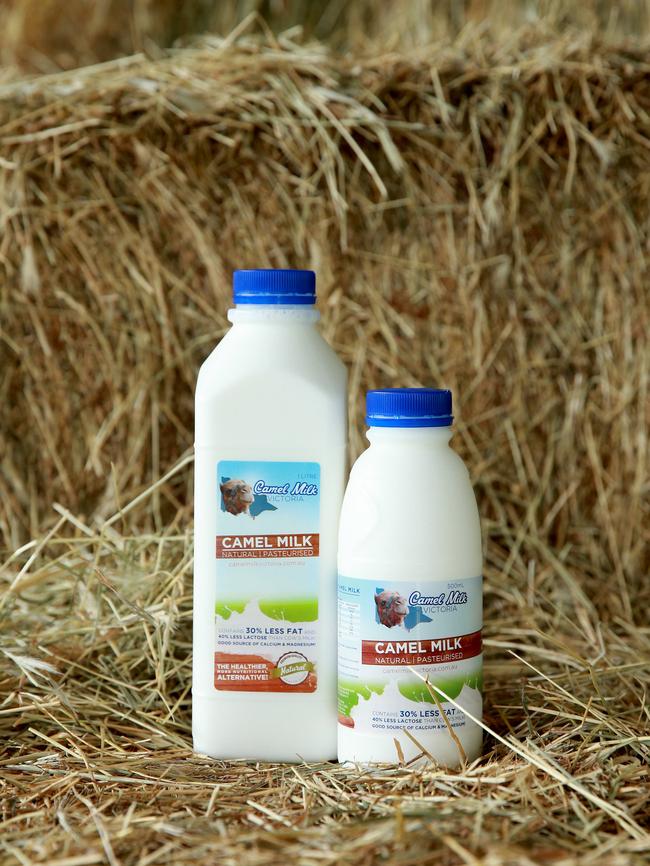
Megan Williams and her husband, Chris, run Camel Milk Victoria, the first licensed camel milk dairy farm in Victoria, with a herd of 70 camels and 20 milkers on 43 hectares at Kyabram.
The couple plan to increase to 50 milkers by the end of this year.
Milk is sold in one-litre or 500ml containers to independent grocers, Middle Eastern stores and health food shops in Victoria, NSW and South Australia, with plans to export to Malaysia next year. Camel milk retails for $21 a litre.
Camel milk is also made into body products including soap, lip balm and laundry powder in Melbourne and sold through a selection of stores.
The Williams plan to produce camel milk powder, camel milk chocolate, cheese and yoghurt. Late next year they are planning a camel-inspired tourist farm on 200 hectares near Kyabram.
Megan and Chris Williams are in the 2016 running to be The Weekly Times Coles 2016 Farmer of the Year. For more information, visit theweeklytimes.com.au

